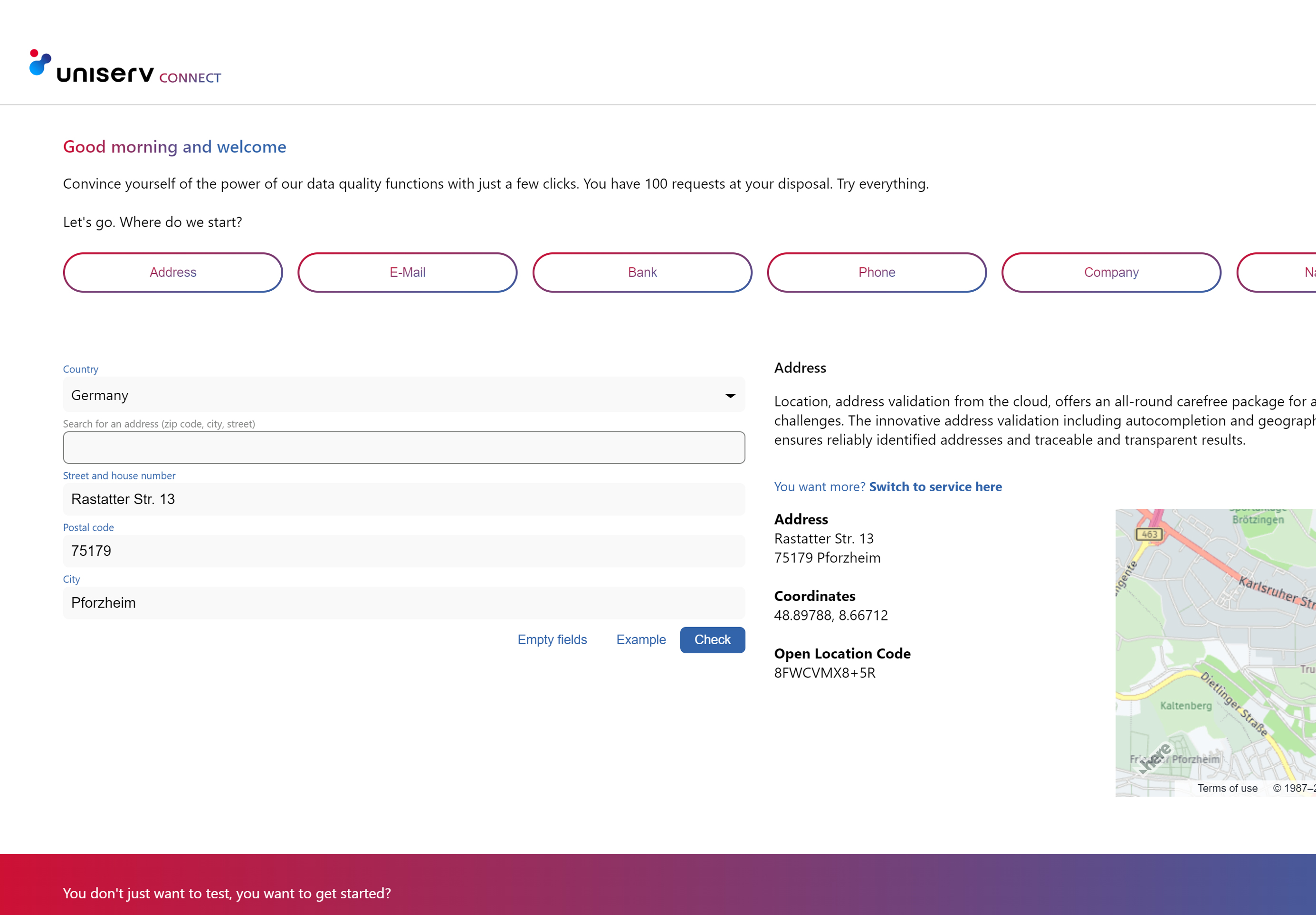Arrange address elements with artificial intelligence

Thanks to AI, problems with unstructured addresses will soon be a thing of the past
Addresses are often unstructured. Uniserv uses AI to convert unstructured addresses into a structured format. With ISO 20022, structured addresses will become mandatory in payment transactions from the end of 2026. Uniserv recognizes important components such as street, house number, and postal code. This results in high-quality, usable addresses. Bring order to chaos with artificial intelligence.

SEPA 2.0 requires structured addresses
Customer and prospect addresses enter the company online and offline via a wide variety of touchpoints. The majority of these addresses are structured. However, a residual amount of unstructured addresses remains.
This is problematic. Under SEPA 2.0, for example, banks must deliver structured addresses in SEPA payment files by the end of 2026 at the latest. This applies to all SEPA payment formats. For payments within the European Economic Area (EEA), delivery remains voluntary – but if banks decide to do so, these addresses must also be structured.
Causes of unstructured addresses
- Migration projects in which addresses are unformatted (e.g., addresses from memo fields).
- Projects in which a formatted data layout exists, but the content is often incorrect (e.g., addresses migrated multiple times to different structures).
- International addresses without suitable capture.
- Contact data in the purpose field of bank documents (e.g., donation receipts from charitable organizations).
- Contact data from web scraping.
- Contact data from automatic email processing after structuring for linking to the customer database.
- Smart line-by-line international address capture while still performing address verification and duplicate checking and structured storage in the database
Not all addresses are the same
And now? It's time to get organized. Easier said than done. To accomplish this task efficiently and effectively, you need expertise from the vast world of addressing:
- Addresses vary from country to country in terms of their structure. In Germany, for example, addresses are organized in fields, while in France they are organized in lines.
- Individual address elements are in different positions from country to country. In USA, for example, the house number comes before the street name, while in Germany it comes after.
- Different countries have different additions that specify an address. In Austria, for example, there is “Stiege,” while in Poland there is “Woiwodschaft.”
- The composition of field contents varies from country to country. In the UK, for example, postcodes consist of two alphanumeric blocks, in Belgium they always consist of four five digits.

So far, so good. Now imagine that you are dealing with an entire collection of unstructured addresses from several countries. To bring the necessary structure to bear, you would have to go through each address individually, identify the country, know how the address is structured, and identify and assign each element. This can be done manually with reasonable efficiency for two, three, four, or five handfuls of addresses. But what if we're talking about several hundred or thousand addresses? Manually, it's impossible.
Try Uniserv address structuring free of charge and with no obligation
Unlock additional potential now and experience how unstructured addresses can become valuable data for your business.
Test and discover our data quality services from the cloud in Uniserv CONNECT free of charge and without obligation. Interactively check address, contact, company and bank data. What to expect:
- 100 free requests. Test all services extensively & free of charge.
- API documentation. All integration & interface details.
- Discover & try out. Clear examples of different use cases.
- Questions? Our experts are ready to help you.
Uniserv makes this task easier. Thanks to its AI, Uniserv identifies the individual elements of unstructured addresses across countries and converts unstructured addresses into structured and usable addresses. For example, the service recognizes the individual elements and names them as such. Knowing the address structure in the respective country, the existing data fields can be filled in. AI-supported, high-quality addresses are created piece by piece. These can be used further, for example for marketing campaigns or order confirmations or as delivery addresses, depending on the industry and use case.
Problem solved. Unstructured addresses are useless unless you end up deleting them. And that would mean losing valuable potential. Who can afford that, given how time-consuming it is to acquire new customers?

We are here for you.
Our Customer Data Experts will quickly and competently answer your questions and find a suitable solution for your concern
You might also be interested in:





